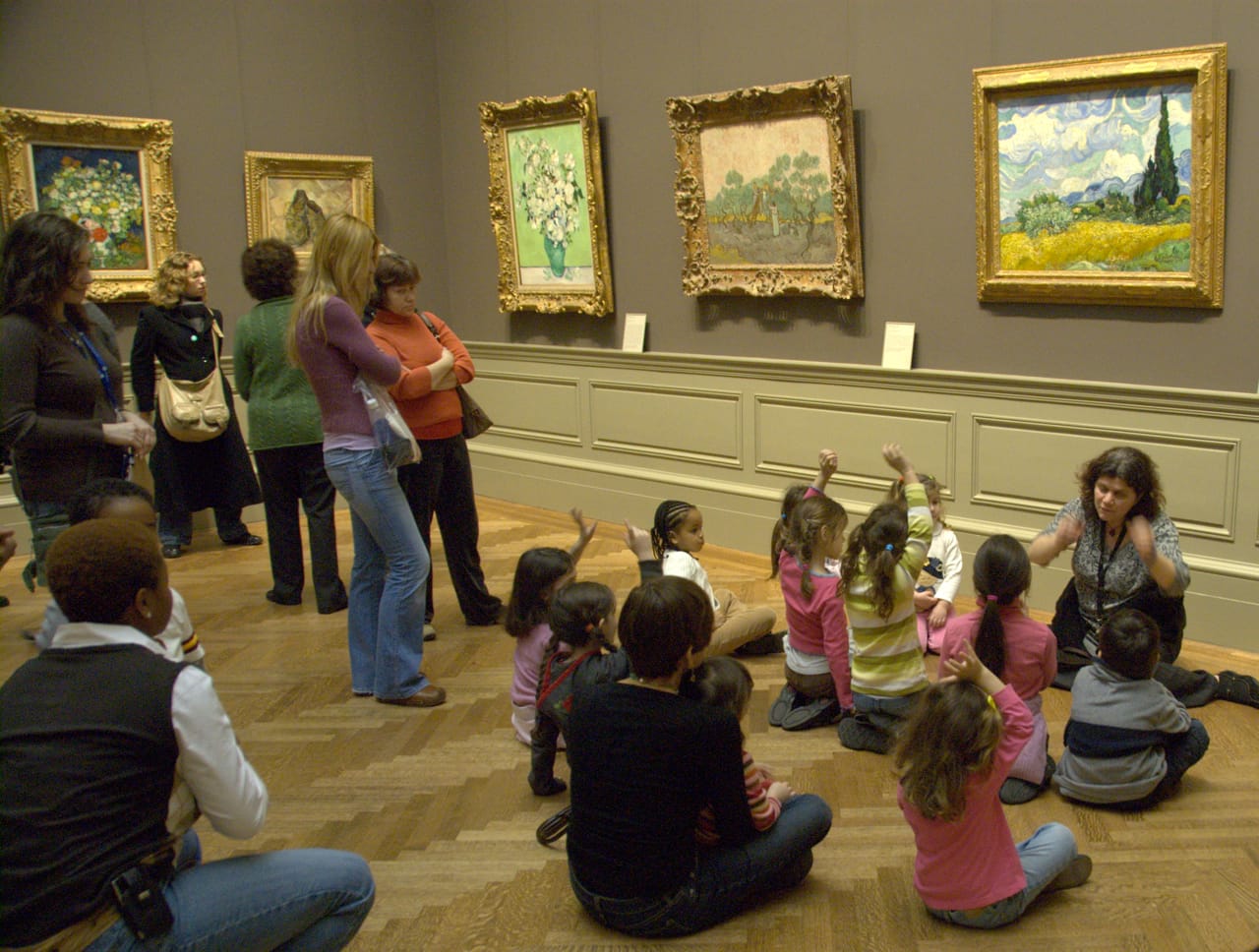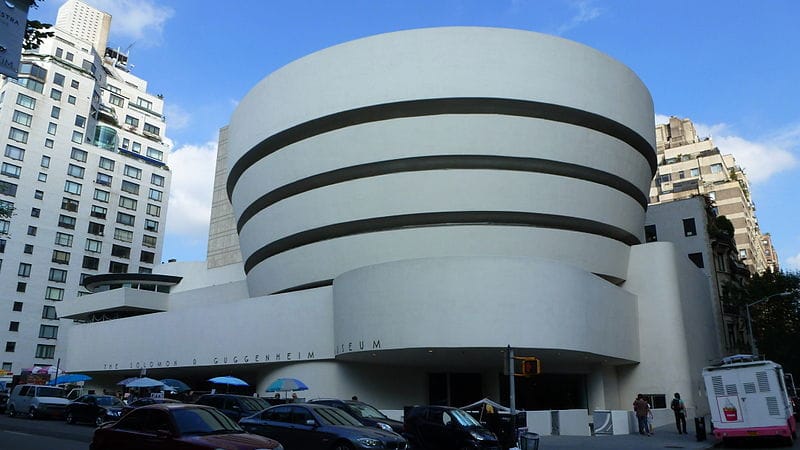The Precarious Lives of Freelance Museum Educators
Museum educators are crucial to museums’ long-term public engagement, but these freelancers lack the job security of a full-time, salaried position.
This is Part 2 of a series on museum educators in New York City. The previous post concerned the logistics and methods of gallery-based education.

The freelance museum educators working in New York City are a particular breed of professional: highly trained (often with specialized skills for teaching populations with cognitive issues or physical disabilities), mostly possessing advanced degrees, frequently in love with their jobs. For museums, having these vitally committed, knowledgeable personnel to provide a human face for the institution is essential to one of their main objectives: helping the children and adults they teach to develop a long-lasting relationship with the museum. These freelancers are also mostly women who have backgrounds in art history, education, writing, or commercial art trading, or are themselves practicing artists.
The picture that emerges of their employment is somewhat paradoxical. They make their living by stitching together several assignments at major museums, providing a critical service for them with no realistic long-term prospects and few employment benefits. Yet the flexibility of this type of employment is particularly attractive to working artists who need to prioritize their own practices in addition to other paying work. The educators I spoke with tend to work about nine months out of the year, since school groups are out for the summer. Some are quite happy with this arrangement because it allows them time to pursue other interests or their art practice. Still, perhaps the most glaring incongruity to educators’ employment is that while they are crucial to the museums’ long-term public engagement, these are freelancers, hourly waged workers-for-hire who lack the job security of a full-time, salaried position.
The Solomon R. Guggenheim Museum, the Whitney Museum of American Art, the Morgan Library and Museum, the Metropolitan Museum of Art, and the Museum of Modern Art all utilize freelance educators. The reason for this seems to be the relationship between these institutions’ limited resources and the mammoth school population that exists within the environs. Were museums to hire enough full-time employees to manage the demand from area school groups, the work imbalance during the summer months would force the furlough of these staff members each year. Moreover, the learning groups vary their attendance from week to week and month to month.
Precisely because of this variance, most freelance educators learn to work with diverse populations, including children (K–12), adults, community groups (those without a school affiliation), and special-needs groups. As pointed out in Part 1, the educators usually arrive on the job already trained in the techniques of inquiry-based, child-centered learning, which treats the particular abilities and experience of each learner as the ground on which to build visual and verbal literacy.

These educators form a corps of highly skilled workers that is available on demand — a type of employment that is becoming widespread in developed economies. This kind of labor is essentially the correlate of an on-demand or gig economy exemplified by enterprises such as Uber, Airbnb, Etsy, and TaskRabbit. It is fundamentally an outgrowth of shifting post-Fordist economic structures and practices that manage to be both promising and nightmarish. This circumstance has also been described as the “atomization” of the American workplace: transforming salaried workers into temps, subcontractors, part-timers, and on-call workers, which reduces companies’ costs but also decreases workers’ bargaining power. Gig employment promises flexibility and freedom, allowing workers to develop more equitable peer-to-peer financial contracts, but it also removes the security of fixed career paths and the surety of corporate frameworks for promotion and the valuation of labor.
It is in how their labor is valued and compensated that freelance educators are most disadvantaged by the move toward the industry’s reliance on relentless competition for short-term work assignments. Essentially, educators are paid for giving a tour, and the basic rate initially seems high: about $100 per hour. (Meeting and planning sessions for extended visits are also paid, but at a much lower rate.) Rachel Farmer, a Brooklyn-based artist who teaches at both MoMA and the Whitney, acknowledges that museum educators are paid more than teaching artists or adjuncts, but their preparation time is generally unpaid; they are not compensated for research or time spent absorbing new exhibitions, though the time this takes generally decreases as the educator becomes more familiar with the museum’s collection and themes. One educator estimates that she spends between zero and four hours in preparation for a given tour.
Still, few of the major institutions at which these educators work have kept pace with the rising cost of living in New York City. The pay rates for freelance educators at MoMA have been static for the last eight years, despite the funds lavished upon the institution’s last expansion and its Brobdingnagian endowment. The Whitney Museum did finally raise its pay rate in 2015 — for the first time in 10 years. The Morgan has seemingly been the most conscientious employer among these: its educators have received two raises within the last decade. The educators all agreed that most of their cadre earn no more than $45,000 per year, though perhaps with prodigious effort, perhaps working seven days a week, one might earn up to $50,000. Additionally, as freelancers, they must purchase their own health insurance and contribute to their own makeshift retirement funds. Farmer admits that museum education is not a lucrative field across the board, but she says that the institutions do provide an excellent working environment. She feels “completely supported” by her supervisors and is thrilled to spend her time teaching in the galleries of both museums.
The employment situation for freelance museum educators seems consistent with that of many well-educated, highly skilled workers in the US who must compete with colleagues offering the same attributes to potential employers. To make workers feel further insecure seems mercenary, however that does happen in the museum field. One educator says that she felt the managers at MoMA made it clear that she and others in her position were replaceable.
The story of the art world, by and large — and certainly the story that is used to capture visitors’ imaginations and link them to the art objects — is that this pursuit of aesthetic wonderment and discovery is not and never has been about money. The museums subtly convey this to freelance educators in many ways. It certainly seems to sully the tale to admit that its primary tellers can hardly afford to risk conveying the whole of it.





